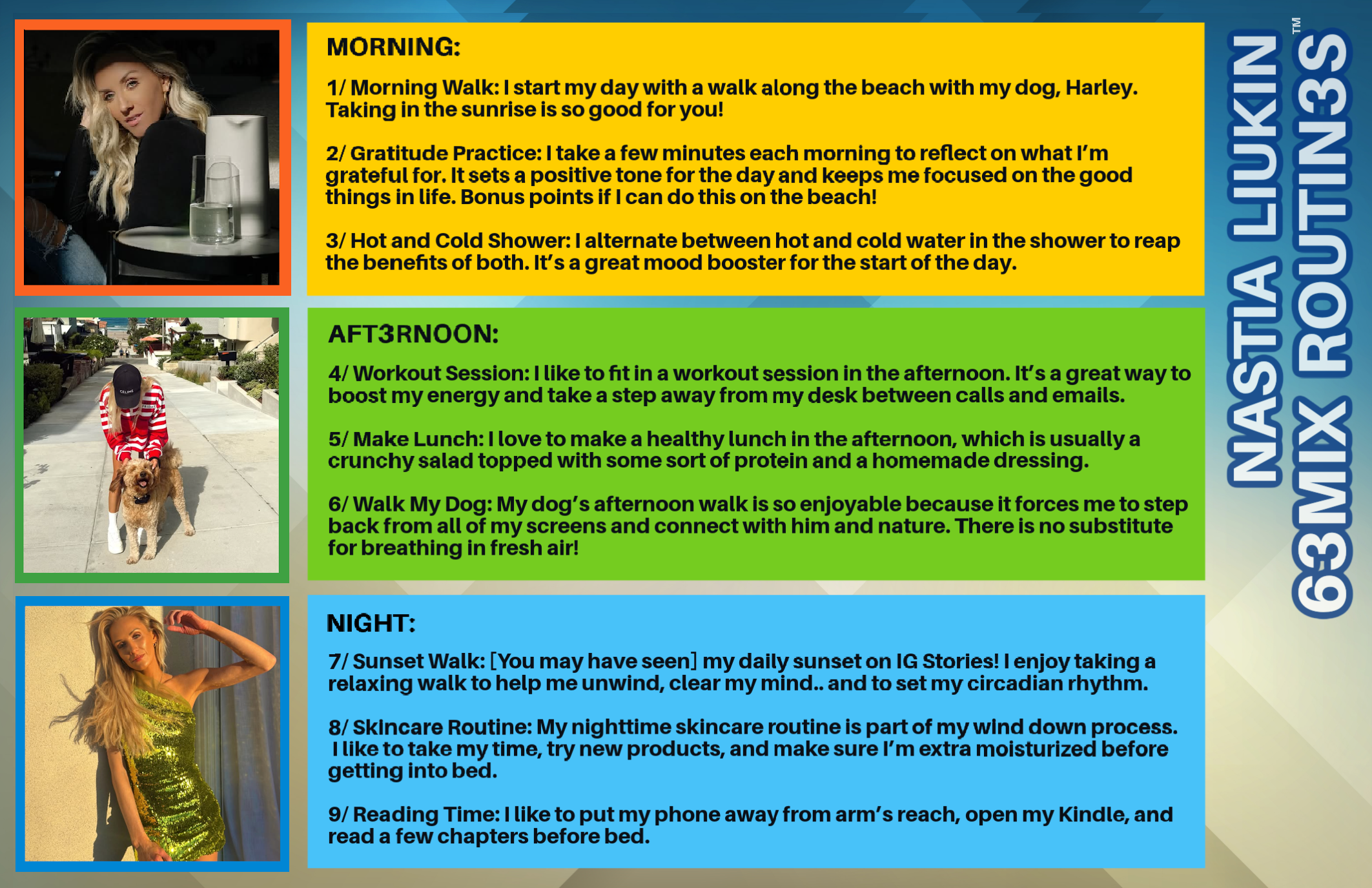ATHLEISURE MAG: We are in that time of year where we are celebrating with friends for Super Bowl, Mardi Gras (whether you live in New Orleans or not) and St Patrick's Day. Whatever excuse we use to be with friends, how can we make these celebrations toxin free?
SOPHIA GUSHEE: Before these events, I try to load up on wholesome, healthy foods, and hydrate before with lots of filtered water. Once at a party, I give myself permission to enjoy what I want, but since I'm usually not hungry or thirsty from filling up before the party, I find that I simply don't desire as much at the party. But I'll scan my options at the party and pick the one indulgence I'd really enjoy, and just cherish eating that!
If I'm hungry at a party, I try to stick to foods that are simple, natural options (like veggies, guacamole, and hummus; or, meats, poultry, etc if I crave it); and I minimize or avoid processed foods (popular cheeses can be processed) or foods with chemicals (like anything with artificial colors, sugars, and preservatives).
If drinks are served (the alcoholic types), I've reducing my sugar intake by choosing a tequila drink with lots of lime and sparkling water. Choosing this tequila over wine (my preferred choice for years) significantly cuts down on my sugar intake. Plus, there are reported health benefits from drinking tequila so it might even be good for me.
And, always, if I'm eating or drinking something unhealthy and I don't LOVE it, or it's not making me more happy, then I don't finish it. It can become waste or waist: I better love it if it's becoming waist!
AM: Labels can be very confusing even when you are trying to do it the right way what is "Certified Organics" and how is that different than "Made with Organic Ingredients" - also are there other labels or verbiage that sound similar, but have very different meanings?
SG: Labels are so confusing! One important thing to know about labels is that the FDA does not define the word "natural," so food and cosmetic companies can use it to describe their products--even if the ingredients include some very synthetic components. "Organic" is similar in that it isn't defined by the FDA, but it is regulated by the USDA, so the "USDA Organic" seal is what you want to look for. However, there are still details within that "USDA Organic" label to consider. While this isn't exhaustive of those details, here's a cheat sheet to help:
USDA 100 percent organic: This means that all ingredients are organic (excluding salt and water). This label is most typical on farm products like fresh produce, grains, and flours.
Organic: This label indicates that at least 95% of the ingredients are organic (again, excluding salt and water).
Made with organic: This can be used on products that contain at least 70% organic ingredients (still excluding salt and water!).
AM: We heard and have read that although labels must let us know what's in our food, there are some gray areas such as spices not having to be detailed specifically, how can people who may be allergic to certain spices know what to avoid in these foods?
SG: The FDA doesn't require specific spices to be included on food item labels, so, unfortunately, someone with an allergy to one specific spice will need to research the food products they buy. Start by narrowing your product considerations to those whose ingredient lists contain simple, recognizable ingredients. Then contact those manufacturers to have them verify in writing (like email) that.
AM: When we're shopping at WholeFoods, Trader Joe's and Farmer's Markets - how can we ensure that we are purchasing items that are toxin free?
SG: This is an excellent question that doesn't have a simple solution.
First, those retailers sell a wide range of product types (not just food but also cleaning and personal care products). And each product type has unique considerations because they have different reasons for toxic exposures. The toxic concerns vary by product type. For example, toxic concerns about cheese depend on various things. Key issues include: 1) the diet (antibiotics or growth hormones?) and farming conditions of the cow from whose milk the cheese was made; 2) the manufacturing process of the cheese (did plastics or other materials that came into contact with the food leach contaminants into it?); and, 3) food packaging (soft plastics that wrap cheese can leech toxic chemicals into the cheese).
Second, toxin free food is rare when our environment is so polluted. For example, arsenic (the cancer-causing type has been detected in some rice and rice byproducts). Turns out, it's because arsenic can exist in high concentrations in some agricultural lands, like in Texas than compared to California ("white rice from California have 38 percent less inorganic arsenic than white rice from other parts of the country," according to Consumer Reports). Informed people can make safer choices, however.
I prefer homemade meals so I can control the quality of the ingredients. For packaged foods, I choose products that have simple--and easy to understand--ingredients lists. No artificial colors, sugars, and preservatives. I buy local, seasonal, organic as much as possible. Frozen organic fruits and veggies are staples in my household too: They're convenient and can be more nutrient-dense.
AM: Is there a movement being made to
identify where our foods come from so that there is less of a murky feeling when buying foods that you think are correct?
SG: Yes! There are many dedicated activists that continually strive to achieve more transparency with food items (and all consumer products, really). However, it's complicated for several reasons. One, manufacturing food has become an international effort. For example, manufacturing juice boxes involves ingredients that are often created from several countries. While there are many advantages to this international approach, it also complicates our understanding of which foods are the safest ones for us to eat.
Second, changes in legislation occur slowly. Instead, change has sometimes come voluntarily (before legislation) because businesses responded to pressure from consumers who demanded healthier products.
This is one reason why it's so important to spread awareness of our toxic exposures: So we can each contribute to both making safer choices for ourselves today and let businesses know that we care. They pay attention to what we buy, and respond when enough of us complain!
I'm trying to help others not only eat healthier, less toxic food but also help others select healthier household products at my online D-Tox Academy. It's still in development but people can register for my free newsletter to learn about it's rollout as well as other online D-Tox programs.
AM: For those looking to snack responsibly, what are go to's that you can list that we should keep on our radar?
SG: Healthy smoothies are popular. The kids love them frozen since the kids then feel like they're having ice cream.
We have lots of unsalted nuts--like almonds or cashews, although they aren't allowed in all spaces, such as schools, because of the prevalence of allergies. Dried seaweed snacks are also popular in my home. As are apple slices, and, in the summer, frozen strawberries.
We also have tons of avocados. Cutting them in half, removing the pit, and sprinkling Himalayan sea salt is always a satisfying snack! You can also spread avocado slices on toast (I'll spread Vegenaise on the toast too), add salt, but also curry: Yum!
AM: How can we detox our homes, medicine cabinets as well as beauty products - what would you suggest in terms of products whether they are masstige or prestige?
SG:That's such a great question but, again, hard to answer simply! As in the example of toxic exposures from cheese, the details matter.
But, general strategies that would provide a great start to detoxing your home, medicine cabinets, beauty products, and more include: discarding items you don't need or use (assume most things contaminate your indoor environment); buy just what you really need; avoid spray products because inhaling the chemical formulas can be more risky; and, for similar concerns over spray products, be weary of powdered products. Not all spray and powdered products are necessarily toxic (many are) but it's hard to know which ones are safe. The Environmental Working Group has a great free online database where you can research your products to learn of their hazard rating.
As for masstige vs. prestige, you can't necessarily trust a product just because it's prestige and has a high price point (even if its labeling states that it's a healthier product). However, it has been my experience that the cheapest cosmetics products usually contain toxic compounds. However, I've also determined for my skin--after trying many masstige and prestige oils and lotions--my preferred products are those that are healthy enough to eat: organic coconut oil, sesame oil, olive oil, and shea butter (I look for the most unprocessed options). They just make my skin feel more comfortable!
I have also just started using 100% pure essential oils and really enjoy them. The lavender oil is exceptionally helpful for dry, itchy skin.
AM: How did you come into this line of work and what was your background?
SG: For about 4 years before entering, and then for about 5 years after graduating from, Columbia Business School, I worked in investment management; specifically, high-risk, high-return investments. This meant that key parts of my job were to investigate chaotic situations quickly. I'd gather facts, form key questions, pursue the best answers to those questions, assign different weights to information that I was considering, analyze the data to identify past trends of the "truth" and estimate likely future trends, estimate the likelihood that different outcomes may occur, and boil all our due diligence into a handful of key numbers.
As a new mother, I couldn't help but apply these analytical and critical thinking skills to parenting. Each night, I reviewed books on how to care for my newborn: how to get her to sleep, how often to feed her, what to feed her, etc. It was through a nightly review of thoughtfully selected reading materials that I started to learn about toxic chemicals in our everyday consumer products, including baby bottles, toys, mattresses, and most everything else that we buy for our home.
Since I was shocked by what I was learning, my background in investment management naturally led me to research every alarming claim to see if credible sources could verify these claims. They always did. Sometimes I could verify the claims in a few hours, and sometimes it would take years because the studies and research are ongoing.
Frustrated by how I was learning about toxic exposures from what I buy, I wanted to gain control over the situation and so I decided to study this topic so I felt informed and empowered to make safe choices. I thought it would take me a year of focused work. But it ended up taking a total of 8 years. And I resigned from my investment management job, which I loved, when my first child was about a year old.
In October 2015, I finally released the guidebook that I wish I had sooner. It's titled A to Z of D-Toxing: The Ultimate Guide to Reducing Our Toxic Exposures. I wrote it to be a must-have book for every head of household, and I believe that it is! I wrote it for my younger self, hoping to make it easier for anyone else who'd like to know what they should know and what they can do about our toxic exposures.
AM: Chemicals affect everyone, but who is the most susceptible to this the young, young adults, adults, elderly etc?
SG: Young, developing bodies are particularly vulnerable to the effects of toxic exposures, because they are still growing. As miraculous and intricate as our bodies are, they can be affected by even small doses of toxicants, and children are the most vulnerable. Since a mother passes on her chemical body burden to her child while she is carrying, and then throughout the breastfeeding stage, it's a great choice for parents (dads, too!) to begin detoxing as early as possible.
The elderly and those with compromised immune systems are also particularly vulnerable.
While the rest of us are less vulnerable, the potential adverse effects from exposures to compounds found in everyday products, including our diet, can be meaningful! They have the potential to disrupt various biological processes, like metabolism, sleep, mental clarity, energy, fertility, and more.
AM: What are your favorite places to eat from fast casual to a nice night out with cocktails that you would suggest that get your toxin free stamp of approval?
SG: Again, since our environment is more toxic than ever, toxic-free probably doesn't exist. But, studies suggest that a diverse, plant-based diet may offer protective and detox benefits to boost your body's resiliency. So my favorite restaurants are mindful of the ingredients that they use.
For a quick meal in New York City, I love Dos Toros, a tasty Mexican chain whose food feels relatively healthy. I always get the "Plato," with rice, beans, all the veggies I can get, guacamole, and lots of spicy sauce!
For longer meals in New York City, I enjoy Blossom, which is a delicious vegan restaurant, as well as ABC Kitchen, which is an exquisite organic, local, and environmentally conscious restaurant.
AM: Why should we be so concerned about toxins and what are the effects in our bodies?
SG: With advances in science and technology, we've gained sharper insight into how complex it is to understand how our average toxic exposures may affect us and our kids. While there's a lot more to learn, what we do know is jaw-dropping. For example:
With advances in science and technology, we've gained sharper insight into how complex it is to understand how our average toxic exposures may affect us and our kids. While there's a lot more to learn, what we do know is jaw-dropping. For example: tiny doses can cause adverse effects (note that one popular birth control prevents reproduction at 0.035 parts per billion; and that 1 part per billion is like 1 drop of water in an Olympic-size swimming pool); effects created from tiny doses can be different than effects created from high doses; timing of exposure matters (like when the brain or heart are still developing, and note that the brain develops into our 20s); our bodies store some of these toxic compounds and they can be released later, including to our future children when in the womb or through breastfeeding (and breastfeeding is still generally the superior way to nourish an infant); and, there can be a cocktail effect from the mixture of chemicals we are exposed to, and then there's the potential cocktail effect from when our daily exposures mix with those already in our bodies, and then different possibilities exist inside us.
We encounter many chemicals, from many sources, many times a day, from before we are born. We simply don't know yet how cumulative, chronic exposures may affect us over a lifetime, but common sense says that hacking our toxic exposures is a good idea.
Leading researchers and scientists (including those on the President's Cancer Panel, which is an organization that reports directly to the President of the United States) believe that exposures to these toxins have an important influence in the rapid increases in various health issues, including cancer, reproductive issues, allergies, birth defects, obesity, and neurological disorders.
Read more from the Feb issue as well as A to Z of D-Toxing in mag












